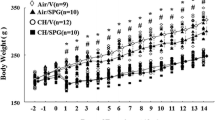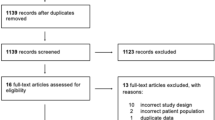Summary
In this survey the possible role of serotonin in such acute disorders as systemic and pulmonary hypertension following cardiac surgery is discussed. Although platelets are activated during cardiopulmonary bypass, the increase in serotonin plasma levels is limited because the serotonin released is taken up by normal platelets and endothelial cells. This does not imply that serotonin is not involved in the origin of systemic hypertension during and after cardiac surgery, because subthreshold or threshold doses of this amine amplify the vasoconstrictive effect of, for example, epinephrine and norepinephrine, the levels of which are significantly elevated under these circumstances. That serotonin plays a role through its amplifying effect is supported by the finding that ketanserin, a specific S2-serotonergic receptor antagonist with α1- adrenergic receptor blocking properties, effectively lowers arterial blood pressure in patients with systemic postoperative hypertension by combined blockade of these receptors. The compound is also effective in the treatment of pulmonary hypertension after valve replacement, indicating that serotonin plays a role in the origin of this disorder. This idea is supported by the experimental finding that serotonin induces pulmonary hypertension. It is an interesting observation that, unlike such compounds as nitroprusside, ketanserin does not affect intrapulmonary shunting in patients with systemic hypertension and even reduces the intrapulmonary shunt fraction in patients with pulmonary hypertension. These findings indicate that this compound dilates the resistance vessels in well-ventilated, but not in poorly ventilated areas, and may dilate constricted bronchi. The latter assumption is supported by the finding that serotonin indeed induces bronchoconstriction in animals.
Similar content being viewed by others
References
Engelman RM, Haag B, Lemeshow S, et al. Mechanism of plasma catecholamine increases during coronary artery bypass and valve procedures. J Thorac Cardiovasc Surg 1983;86:608–615.
Reves JG, Karp RB, Buttner EE, et al. Neuronal and adrenomedullary catecholamine release in response to cardiopulmonary bypass in man. Circulation 1982;66:49–55.
Townsend GE, Wynands JE, Whalley DG, et al. Role of renin-angiotensin system in cardiopulmonary bypass hypertension. Can Anaesth Soc J 1984;31:160–165.
Hawkins SS, Forsling M, Treasure T, et al. Changes in pressor hormone concentrations in association with coronary artery surgery. Br J Anaesth 1986;58:1267–1272.
Chambers DJ, Karimzandi N, Braimbridge MV, et al. Hormonal and electrolyte responses during and after open heart surgery. Thorac Cardiovasc Surgeon 1984;32:358–364.
De Jong JCF, ten Duis HJ, Smit Sibinga CT, et al. Hematologic aspects of cardiotomy suction in cardiac operations. J Thorac Cardiovasc Surg 1980;79:227–236.
Dungenvan den JJAM, Karliczek GF, Brenken U, et al. Clinical study of blood trauma during perfusion with membrane and bubble oxygenators. J Thorac Cardiovasc Surg 1982;83:108–116.
Schmid-Schönbein H. In: Discussion, basic aspects of blood trauma. Schmid-Schönbein H, Teitel P, eds. The Hague: Martinus Nijhoff, 1979:99.
Eika C. On the mechanism of platelet aggregation induced by heparin, protamine and polybrene. Scand J Haematol 1972;9:248–257.
Abela M, McArdle B, Qureshi M. Heparin-enhanced ADP-induced platelet aggregation in patients undergoing cardiopulmonary bypass surgery. Perfusion 1986;1:175–178.
De Clerck F, Herman AG. 5-hydroxytryptamine and platelet aggregation. Fed Proc 1983;42:228–232.
James TN, Isobe JH, Urthaler F. Analysis of components in a cardiogenic hypertensive chemoreflex. Circulation 1975; 52:840–845.
Janssens WJ, Van Nueten JM. Amplifying effect of serotonin in the control of vascular tone. In: Proceedings, International Symposium on Serotonin from Cell Biology to Pharmacology and Therapeutics. Florence, March 29–April 3, 1989. Dordrecht: Kluwer, in press.
Scroop GC, Walsh JA. Interactions between angiotensin, noradrenalin and serotonin on the peripheral blood vessels in man. Aust J Exp Biol Med Sci 1968;46:573–580.
De Clerck F, de Chaffoy de Courcelles D. Amplification mechanisms in platelet activation. In: Meyer P, Marche P, eds. Blood Cells and Arteries in Hypertension and Atherosclerosis. New York: Raven Press, 1989:115–140.
Viljoen JF, Estafanous FG. Acute hypertension immediately after coronary artery surgery. J Thorac Cardiovasc Surg 1976;71:548–550.
Van der Starre PJA, Scheijgrond HW, Reneman RS, et al. The use of ketanserin, a 5-hydroxytryptamine receptor antagonist, for treatment of postoperative hypertension following coronary artery bypass surgery. Anesth Analg 1983;62:63–69.
Lichtenthal PR, Wade LD, Rossi EC. The effect of ketanserin on blood pressure and platelets during cardiopulmonary bypass. Anesth Analg 1987;66:1151–1154.
Van der Starre PJA, Reneman RS, Scheijgrond HW. Ketanserin in the treatment of systemic hypertension during and following coronary artery bypass surgery. Angiology, in press.
Van der Starre PJA, Van Heekeren K, Reneman RS. Peripheral vascular effects of ketanserin and nifedipine during cardiopulmonary bypass. J Hypertens 1987;5 (Suppl 1):205–208.
Hodsman NBA, Colvin JR, Kenny GNC. Effect of ketanserin on sodium nitroprusside requirements, arterial pressure control and heart rate following coronary artery bypass surgery. Br J Anaesth 1989;62:527–531.
Van der Starre PJA. Ketanserin and hypertension in cardiac surgery. Thesis, University of Limburg, Maastricht, The Netherlands, 1988.
Van der Starre PJA, Harinck-de Weerd JE, Reneman RS. Nitroprusside and ketanserin in the treatment of post-operative hypertension following coronary artery bypass grafting; a haemodynamic and ventilatory comparison. J Hypertens 1986;4(Suppl 1):107–110.
Rounds S, Hill NS. Pulmonary hypertensive diseases. Chest 1984;85:397–405.
Reid LM. Structure and function in pulmonary hypertension: New perceptions. Chest 1986;89:279–287.
Laver MB, Hallowell P, Goldblatt A. Pulmonary dysfunction secondary to heart disease: Aspects relevant to anesthesia and surgery. Anesthesiology 1970;33:161–192.
Anjou-Lindskog E, Broman L, Broman M, et al. Effects of oxygen on central haemodynamics and V/Q distribution after coronary bypass surgery. Acta Anesthesiol Scand 1983;27:378–384.
Jonmarker C, Nordstrom L, Werner O. Changes in functional residual capacity during cardiac surgery. Br J Anaesth 1986;58:428–432.
Gallagher JD. Measurement of pulmonary extravascular water during noncardiogenic pulmonary edema after coronary artery bypass grafting. Crit Care Med 1985;13:991–992.
Cavarocchi NC, Pluth JR, Schaff HV, et al. Complement activation during cardiopulmonary bypass. J Thorac Cardiovasc Surg 1986;91:252–258.
Jones DK, Higenbottam TW, Wheeldon D, et al. Prostacyclin, cardiopulmonary bypass and the alveolar capillary membrane. Perfusion 1986;1:165–173.
Sniderman A, Burdon T, Homan J, et al. Pulmonary blood flow; a potential factor in the pathogenesis of pulmonary edema. J Thorac Cardiovasc Surg 1984;87:130–135.
Kaul TK, Bain WH, Jones JV, et al. Mitral valve replacement in the presence of severe pulmonary hypertension. Thorax 1976;31:332–337.
Van der Starre PJA, Feld RJCT, Reneman RS. Ketanserin in the treatment of pulmonary hypertension following valvular surgery: A comparison with sodium nitroprusside. Crit Care Med, 1989;17:613–618.
Van de Water A, Wouters L, Xhonneux R, et al. Cardiovascular effects of ketanserin in closed-chest anesthetized dogs. Arch Int Pharmacodyn Ther 1985;275:267–278.
De Clerck F, Reneman RS. Serotonin and microvascular permeability. Prog Appl Microcirc 1986;10:32–43.
Zabludowski JR, Ball SG, Robertson JIS. Ketanserin and alpha1-adrenergic antagonism in humans. J Cardiovasc Pharmacol 1985;7(Suppl 7):123–125.
Gasic S, Eichler HG, Korn A. Effect of ketanserin on phenylephrine-dependent changes in splanchnic hemodynamics and systemic blood pressure in healthy subjects. J Cardiovasc Pharmacol 1985;7:219–223.
Phillips CA, Mylecharane EJ, Markus JK, et al. Hypotensive actions of ketanserin in dogs: Involvement of a centrally mediated inhibition of sympathetic vascular tone. Eur J Pharmacol 1985;111:319–327.
McCall RB, Schuette MR. Evidence for an alpha-1 receptor-mediated central sympathoinhibitory action of ketanserin. J Pharmacol Exp Ther 1984;228:704–710.
Wenting GJ, Woittiez AJJ, Man in 't Veld AJ, et al. 5-HT, alpha-adrenoceptors, and blood pressure. Effects of ketanserin in essential hypertension and autonomic insufficiency. Hypertension 1984;6:100–109.
Van Nueten JM, Xhonneux R, Janssens WJ, et al. Interaction between S2-serotonergic and alpha-1-adrenergic receptors and control of blood pressure (abstract). In: Mechanisms of Vasodilatation IV. Rochester, Minn: 1986.
Van der Starre PJA, Reneman RS. The α-adrenergic receptor blocking effect of ketanserin and the interaction between α-adrenergic and S2-serotonergic receptor blockade. J Cardiovasc Pharmacol 1988;11(Suppl 1):54–61.
Author information
Authors and Affiliations
Additional information
The authors are indebted to Jos Heemskerk, Emmy van Roosmalen, and Karin van Brussel for typing the manuscript and to Theo van der Nagel for making the illustrations.
Rights and permissions
About this article
Cite this article
Reneman, R.S., van der Starre, P.J.A. Serotonin and acute cardiovascular disorders. Cardiovasc Drug Ther 4, 19–25 (1990). https://doi.org/10.1007/BF00053422
Issue Date:
DOI: https://doi.org/10.1007/BF00053422




